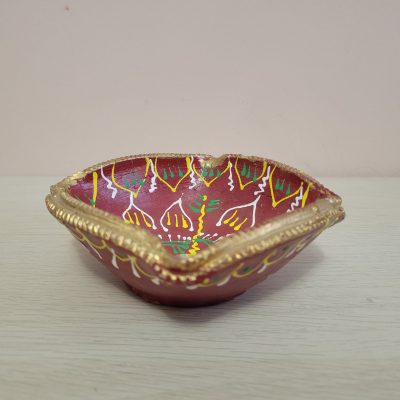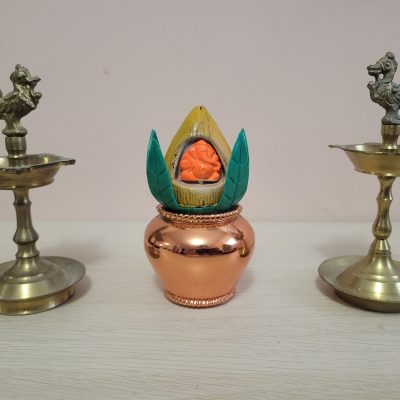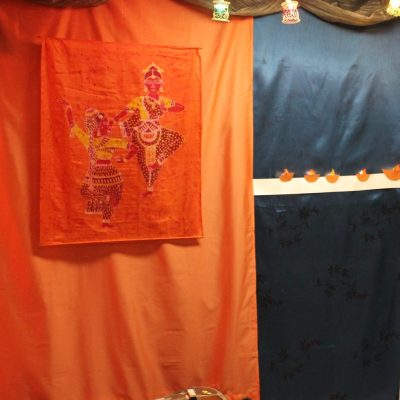| Membership | Price (+HST) |
|---|---|
| Single | $85/year |
| Single Plus | $120/year |
| Family | $130/year |
| Family Plus | $175/year |
| Contributing | $300/year |
| Supporting | $600/year |
| Sustaining | $1,000/year |
| Benefactor's Circle | $2,500/year |
| Director's Circle | $5,000/year |
| President's Circle | $10,000/year |
Festivals of Lights: Diwali
Around the world, people celebrate festivals with specific traditions and customs. When people come to Canada, depending on the food and plants available, they adapt and use what’s accessible for traditions. One important element of these festivals is the use of forms of light.
Through the ages, people have gathered together around fire and light in all its forms. Fire offers warmth, heat to cook with, and protection. Light in nature is used for all kinds of purposes. Moonlight and the stars help mark time and aid in navigation while the sun is an essential part of life and growth. Humans seek out light as it provides comfort, the ability to see and the energy to grow food and plants. Light is celebrated as a symbol of hope because in times of darkness, people wish and pray for light and its reassurance. Therefore, it makes sense that many holidays and observances are celebrated with lights as part of their tradition. People in our communities and neighbourhoods around the world celebrate with the sparkle and bang of fireworks, the comfort of a single candle’s flame, the crackle of flames from an open fire, a lit lantern or the twinkle of lights from decorated boughs of an evergreen or even a palm tree!
Light weaves a common thread to unite people from north to south, east to west in the celebration of many festivals including: Indigenous observances, Diwali, Hanukkah, Christmas, Kwanzaa, Lunar New Year, Ramadan/Eid-ul-fitr. Journey with our volunteers and friends from the Children’s International Learning Centre (CILC) as we learn of celebrations and observances by seeing a snapshot of cultural nuances through their eyes with the RBG at Home blog.
Diwali
(Hindu faith: November 4, 2021 — November 2–6 for 5-day celebration)
(Sikh faith: November 4, 2021)
Diwali, celebrated by people of Hindu, Sikh, and Jain faiths worldwide, is a festival that commemorates the victory of light over darkness and good over evil. The name comes from the term “dipavali” which means “row of lights”. Based on the lunisolar calendar, the five-day period falls in late October to November with the third day being the peak of celebrations. Traditionally, diyas/deepas (decorated clay lamps) are lit throughout homes and streets at night.
In Hinduism, Diwali is celebrated to honour King Rama’s return to his kingdom after victory in a battle, and to pray to Goddess Lakshmi for good fortune and prosperity. In Sikhism, Diwali is celebrated to mark the release of the 6th guru, Guru Hargobind and 52 princes who were wrongfully imprisoned by Emperor Jahangir. In Jainism, Diwali marks the anniversary of Lord Mahavir’s attainment of moksha or eternal liberation.
Both religions of Hinduism and Sikhism celebrate Diwali using many common elements including: lights, food, prayer and traditional clothing. Many families place diyas (decorated clay lamps which are traditionally fueled by mustard oil) along the ledges of their home and/or use electrical twinnkle lights. While celebrating Diwali, many unique sweets and snacks are made or bought at local shops. These sweets are often made with various fruits, extracts, seeds and more. Popular ingredients include coconut, rosewater, nuts, and dates to name a few. The traditional outfits worn on Diwali may include: sari (long piece of cloth draped around the body) or shalwar kameez (tunic and flowy pants) for women and kurta (shirt) and dhoti (long loincloth) for men.
Celebrating Diwali from a Hindu Perspective
Bhaheswary Thirukumar(she/her), Friend of the Children’s International Learning Centre
The celebration of Diwali has always been a special one for me, especially during my childhood in Sri Lanka. On the morning of Diwali, I would wake up to the sound of temple bells ringing by my home and start getting ready for the day. My siblings and I would wear new dresses gifted to us by our parents and make our way to the temple for worship. Throughout the day, we would prepare traditional foods and sweets that are particularly made during festive occasions. As the sun starts to set, we would decorate our pooja (or puja– prayer) room with colourful flowers and numerous deepas or diyas (clay lamps). Our collection of deepas for Diwali was always unique, placed in diverse patterns inside and outside our home. We would continue with a pooja for Goddess Lakshmi and then, serve homemade food and sweets to guests visiting our home. This beautiful day would end with several families on the street coming together to play with sparklers and fireworks that glow in the dark sky. Moving to Canada, some elements of our celebration have changed. However, the essence and delight of Diwali remain alike.


Celebrating Diwali from a Sikh Perspective
Kirpa Sihra(she/her), grade 6 student, Brampton, Friend of the Children’s International Learning Centre
My Diwali celebrations start off by going to school where we celebrate by changing into our cultural clothes. Then, we perform traditional dances, usually Bhangra (a type of popular music combining Punjabi folk traditions with Western pop music) and Giddha (popular folk dance of women in Punjab region of India and Pakistan). This gives us a chance to celebrate as a community and learn about each other’s cultures.
After that, we go home and I help my dad put up lights on my house to symbolize the day. Then we go to the Gurdwara (place of assembly and worship for Sikhs) to listen to religious music and see our family there. My family is also Radha Soami (belief that living gurus are necessary for a guided spiritual life) so after the Gurdwara we go to Satsang (sacred gathering). At Satsang, we make Diwali crafts like diyas and rangoli with paper, colours, and various other materials. Then we go home and we paint real diyas to light and place them at the front of our house. Then we take lots of pictures and eat sweets to end this special day of celebrations.



The Children’s International Learning Centre (CILC) is a non-profit organization that was established with the vision of contributing to a world of care and respect for all people and our environment. We endeavour to do this by promoting respect for diversity and awareness of our world community through guided discovery and interactive, artistic programmes, which will soon be delivered online.
More from the RBG Blog
Check out RBG’s blog for announcements, articles, and more from Canada’s largest botanical garden.
Want to be sure you hear first? Sign up for our weekly e-newsletter to hear about upcoming events, weekend activities, articles, and more!












